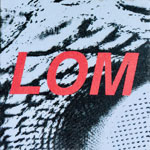Sri Lanka Sound Map
Soundscapes of natural and other habitats
An acoustic tool for nature studies and conservation
The map in the next page marks samples of soundscapes of various habitats in Sri Lanka provided by the archives of Drongo Nature Sounds Library. These are “un-composed” and unedited, in the sense that the sounds in them have not been put together but exist as heard, though they have been refined to some extent for clarity. They were recorded on the days indicated, by wildlife sound recordist Deepal Warakagoda. They are stereophonic, hence closely represent actual spatial distribution of sounds in the acoustic environment of each habitat.
A soundscape is the set of sounds of a landscape, a combination of animal sounds (biophony), natural geological sounds (geophony), i.e. sounds made by wind, water, etc., and human-made sounds (anthropophony). It is a major component of a given environment in ecological studies.
This sound map project, in line with similar programmes elsewhere in the world, is intended to represent natural soundscapes at given times to compare along the passage of time. Those presented here comprise mainly animal sounds at various locations in Sri Lanka. They convey information of acoustic communication in life forms which are living in or at the time passing through (mostly to seek food in) a particular natural environment.
In a study of such an environment at a given time, in addition to visual cues obtained of animals present, its soundscape can indicate richness or poorness of biodiversity. The contents of the soundscape at a habitat vary according to acoustic signals by animals during different times of day, different days, months and years. Repeated sampling at the same location at selected times during a period spanning months or years provides the information needed for a such study.
This mapping project, launched here in July 2022, presents random samplings at the given locations during the past 23 years (since 1999) in stereophonic recordings. The aim here is twofold.
The first is to showcase acoustics of the natural environment in diverse habitats throughout our country across that period. Unfortunately, as revealed under the second aim below, most of these biodiversity-rich environments are dwindling, and it seems we may not be very far from losing their beautiful and rich soundscapes together with the life forms living in them!
The second aim is to provide a reference platform for anyone studying changes that may occur in the acoustic environment of a particular habitat as time passes. A series of such studies carried out methodically at selected location/s will indicate stability or change in the biodiversity of different environments in Sri Lanka through time.
The present project expects to fill up the map gradually with further stereophonic recordings added to the archives of Drongo Nature Sounds Library.
How can you help in this project?
If you happen to visit in the future any places featured here at the same times of year you can listen to (and even audio-record) the soundscape and compare it with what has been heard in this project. You can then inform the Library of your experience and we expect we will find a suitable way to convey it to the public such as through this website.
Please consider that when you purchase the publications produced by the Library (see here) that helps to maintain this reference project and its webpage!
The project is supported by:
LOM
